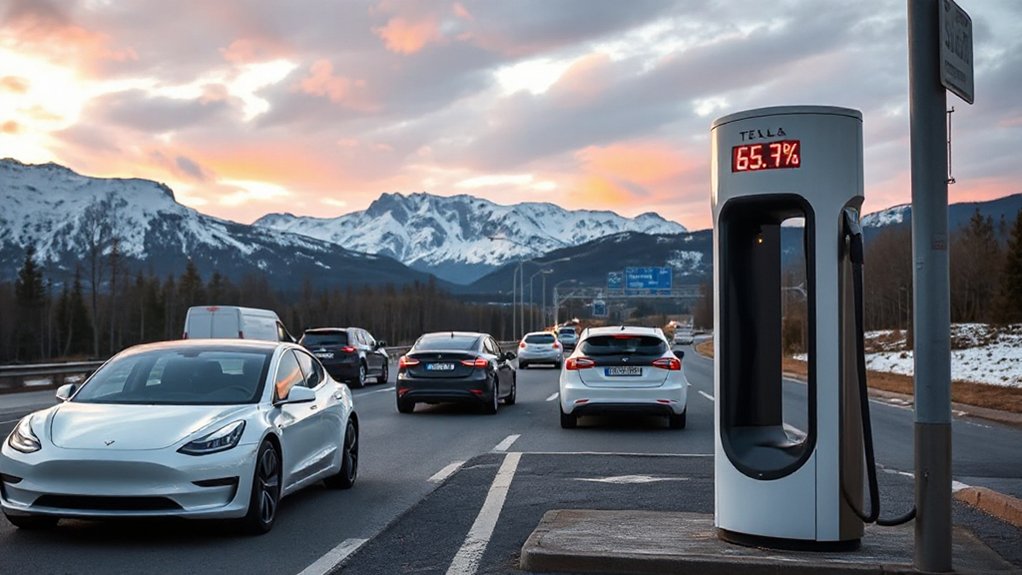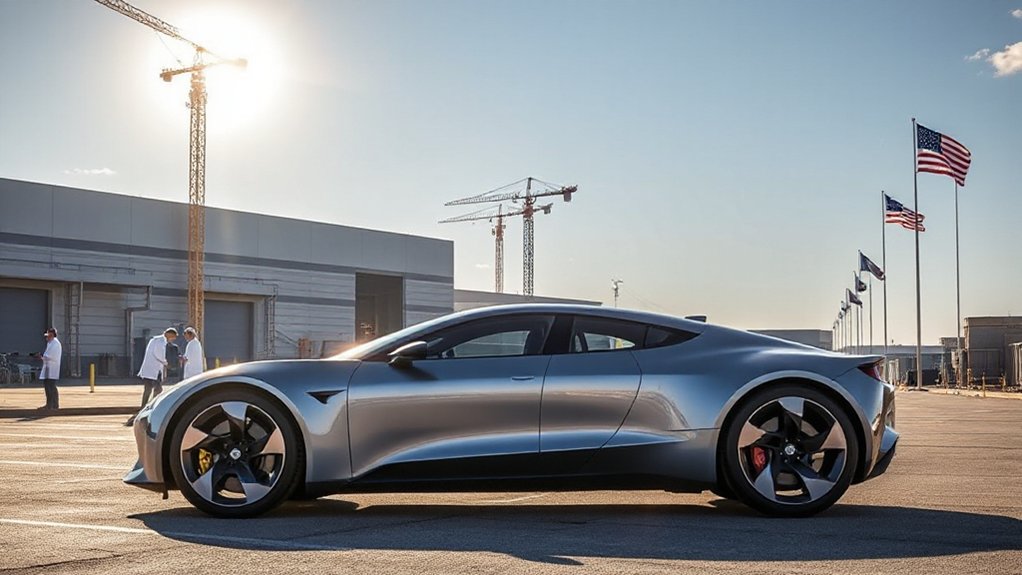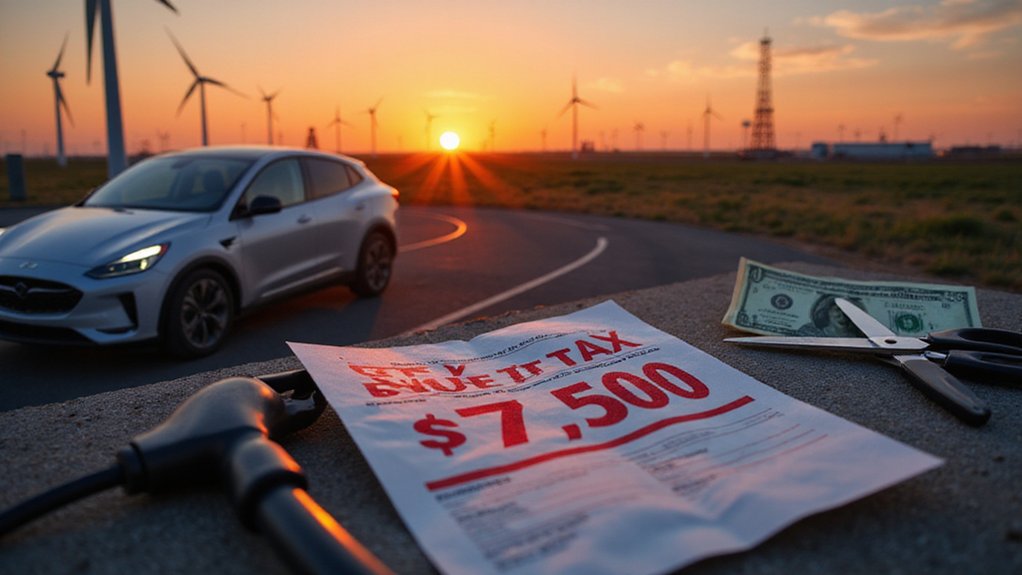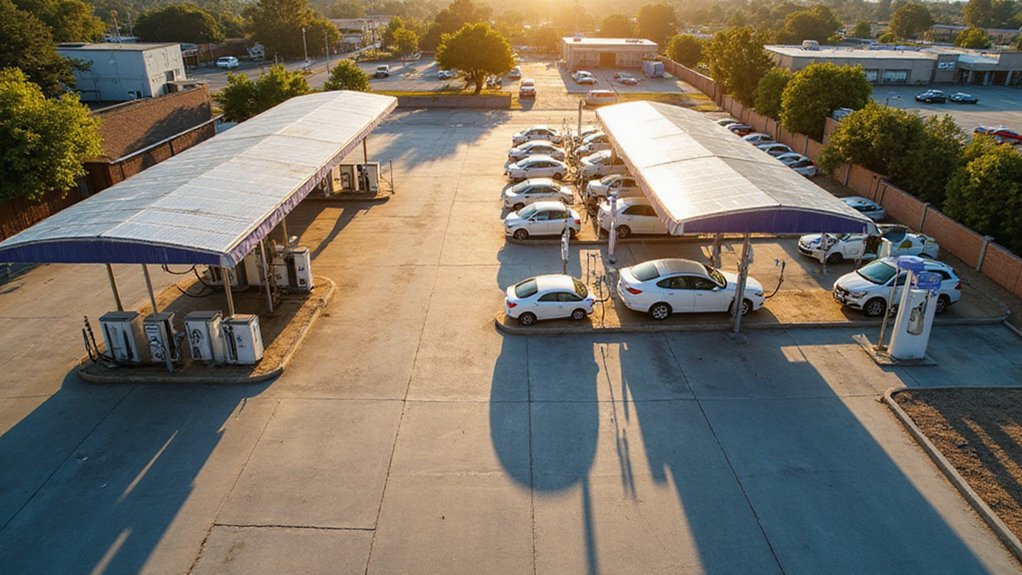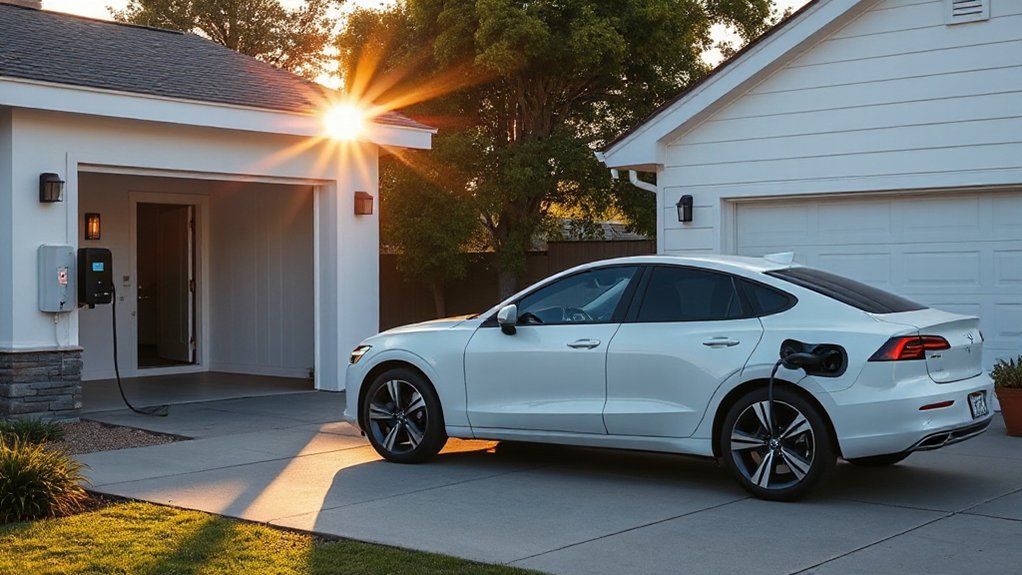Nearly two-thirds of all new cars in Sweden now run on electricity—either fully or partially. The Scandinavian nation hit a stunning 65.7% plugin EV market share in October 2025, up from 62.2% just a year earlier. Impressive? Sure. Revolutionary? Well, that’s where things get complicated.
Battery electric vehicles (BEVs) claimed 36.2% of the market, barely inching up from 35.1% last year. Meanwhile, plug-in hybrids (PHEVs) reached 29.5%, a modest gain from 27.1%. But here’s the kicker—total auto registrations dropped 4% year-on-year to 24,078 units. Not exactly a roaring success story.
Corporate buyers are driving this electric revolution. Nearly two-thirds of all new cars registered in April were corporate purchases, with businesses snapping up 70% of all BEVs. Company fleets love their electric toys. Regular folks? Not so much.
Corporate wallets—not average consumers—are fueling Sweden’s electric transition. Main Street isn’t buying what Fleet Street can’t get enough of.
Year-to-date figures tell a sobering tale. While Sweden sold 49,667 EVs in the first half of 2025 (up 18.25%), BEV volumes for January-October were still about 10% below 2023 levels. The shift is losing steam, folks.
Cold weather clearly isn’t the problem. Sweden’s northern neighbor Finland saw its EV share jump to 36.3% in 2025 from 25.8% a year earlier. So much for that “EVs don’t work in cold weather” myth.
Government incentives have helped, with tax breaks and reduced parking fees. This mirrors the approach taken in the U.S., where tax credits up to $7,500 for new EVs have significantly boosted adoption rates. But the buzz around a possible 2026 incentive scheme for lower-income rural households suggests officials know the shift needs a jumpstart.
The reality? Sweden’s leading Europe in EV market share, but the revolution is sputtering. Despite projections showing the market could reach US$15.5bn SEK by 2030, current growth rates suggest those targets may be optimistic. Every third car sold may be fully electric now, but growth has plateaued. PHEVs aren’t filling the gap. The Volvo EX40 topped October’s sales charts with 1,106 units sold, but that’s small consolation.
Sweden’s EV journey: spectacular start, underwhelming middle chapters. The ending? Still being written.
References
- https://alternative-fuels-observatory.ec.europa.eu/general-information/news/sweden-bevs-reach-35-share-april-2025
- https://eleport.com/ev-sales-in-europe-2025-the-first-half/
- https://cleantechnica.com/2025/11/09/evs-take-65-7-share-in-sweden-slowing-transition/
- https://www.statista.com/outlook/mmo/electric-vehicles/sweden
- https://www.best-selling-cars.com/europe/2025-september-europe-car-sales-and-q3-market-analysis/
- https://www.acea.auto/pc-registrations/new-car-registrations-0-9-in-september-2025-year-to-date-battery-electric-16-1-market-share/
- https://autovista24.autovistagroup.com/news/europes-best-selling-evs-in-2025-so-far/
- https://www.electrive.com/2025/08/14/electric-car-sales-in-scandinavia-continue-to-rise/
